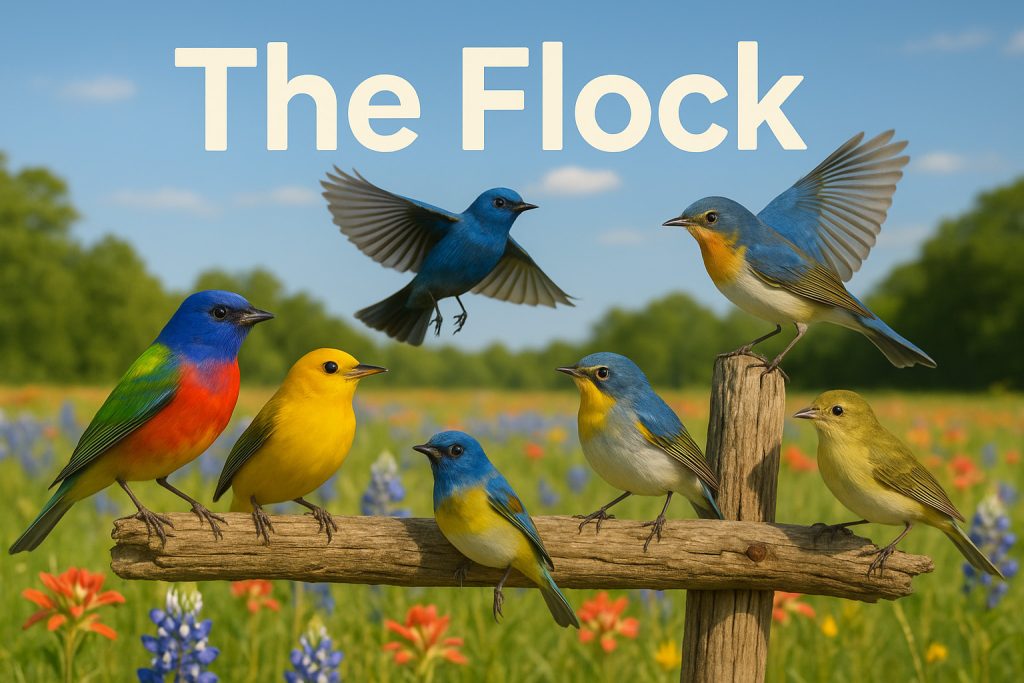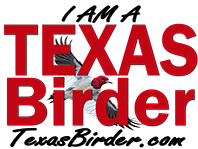
Cooper Lake State Park - South Sulphur Unit
Quote from Michael on June 15, 2025, 12:00 pmTime of visit: mid-June.
Just wrapped up a quick scouting trip over to the South Sulphur Unit of Cooper Lake State Park while I was camped across the water at the Doctor’s Creek Unit. Because, hey, when you’re already halfway across the lake, why not check out the other side?First impressions: South Sulphur is definitely the bigger sibling—more campsites, more day-use areas, and more foot traffic. Translation: if you like your birding with a side of people-watching (or people-dodging), this is the place.
Trails and Terrain
I did a good loop through all the Day Use areas and made a point to check out Coyote Run Trail. It’s a decent walk, but not mobility-friendly in a few spots. The trail had its moments but overall didn’t blow me away—let’s just say it’s not going to win “Best Bird Habitat” in any statewide competition.
Sunset Cove – The Real MVP
Sunset Cove Day Use area was the highlight. There’s water, there’s woods, there’s shade. In short: it’s bird-approved. The White-eyed Vireos were out in force (practically forming a welcome committee), and a good variety of the usual suspects were present. It was windy that day, which kept some of the shyer birds in hiding, but still—definitely worth a return trip.
Campground Birding
I stayed in Bright Star Campground, site #4—and the birds seemed to approve of my choice. Regular visits from White-eyed Vireos, plus a surprise appearance by a Broad-winged Hawk (not exactly a common June guest). I heard Indigo Buntings several times and even caught sight of a couple Painted Buntings just down the road. Bonus points for color!
Comparing the Units
Here’s the fun part: while South Sulphur had its moments, I still preferred Doctor’s Creek overall. Why? More birds, better habitat (in my opinion), and stronger Prothonotary Warbler representation (they were everywhere on that side—on this side, I only heard two).
Final tally:
Doctor’s Creek: 28 species
South Sulphur: 30 species
Species counts were close, but bird volume and vibes were better across the lake. At Gull's Bluff Day Use area, I spotted a Yellow-headed Blackbird, which is the first report of this species ever in this area or in the surrounding counties.Notable Sighting: At Gull's Bluff Day Use area, I spotted a Yellow-headed Blackbird, which is the first report of this species ever in this area or in the surrounding counties.
Seasonal Notes
As with most East Texas spots, both units will probably light up like a warbler Christmas tree come spring migration. But even now, they’re both well worth visiting—especially if you’re the kind of birder who likes exploring contrasting habitats without burning too much gas.
Have you birded both sides of Cooper Lake? Got a favorite campsite or hidden gem? Share your sightings below! Just don’t forget to bring your Vireo decoder ring.
Time of visit: mid-June.
Just wrapped up a quick scouting trip over to the South Sulphur Unit of Cooper Lake State Park while I was camped across the water at the Doctor’s Creek Unit. Because, hey, when you’re already halfway across the lake, why not check out the other side?
First impressions: South Sulphur is definitely the bigger sibling—more campsites, more day-use areas, and more foot traffic. Translation: if you like your birding with a side of people-watching (or people-dodging), this is the place.
Trails and Terrain
I did a good loop through all the Day Use areas and made a point to check out Coyote Run Trail. It’s a decent walk, but not mobility-friendly in a few spots. The trail had its moments but overall didn’t blow me away—let’s just say it’s not going to win “Best Bird Habitat” in any statewide competition.
Sunset Cove – The Real MVP
Sunset Cove Day Use area was the highlight. There’s water, there’s woods, there’s shade. In short: it’s bird-approved. The White-eyed Vireos were out in force (practically forming a welcome committee), and a good variety of the usual suspects were present. It was windy that day, which kept some of the shyer birds in hiding, but still—definitely worth a return trip.
Campground Birding
I stayed in Bright Star Campground, site #4—and the birds seemed to approve of my choice. Regular visits from White-eyed Vireos, plus a surprise appearance by a Broad-winged Hawk (not exactly a common June guest). I heard Indigo Buntings several times and even caught sight of a couple Painted Buntings just down the road. Bonus points for color!
Comparing the Units
Here’s the fun part: while South Sulphur had its moments, I still preferred Doctor’s Creek overall. Why? More birds, better habitat (in my opinion), and stronger Prothonotary Warbler representation (they were everywhere on that side—on this side, I only heard two).
Final tally:
-
Doctor’s Creek: 28 species
-
South Sulphur: 30 species
Species counts were close, but bird volume and vibes were better across the lake. At Gull's Bluff Day Use area, I spotted a Yellow-headed Blackbird, which is the first report of this species ever in this area or in the surrounding counties.
Notable Sighting: At Gull's Bluff Day Use area, I spotted a Yellow-headed Blackbird, which is the first report of this species ever in this area or in the surrounding counties.
Seasonal Notes
As with most East Texas spots, both units will probably light up like a warbler Christmas tree come spring migration. But even now, they’re both well worth visiting—especially if you’re the kind of birder who likes exploring contrasting habitats without burning too much gas.
Have you birded both sides of Cooper Lake? Got a favorite campsite or hidden gem? Share your sightings below! Just don’t forget to bring your Vireo decoder ring.
